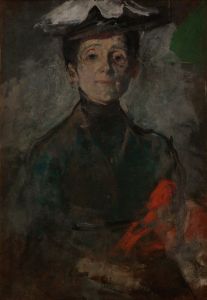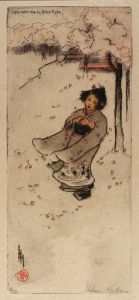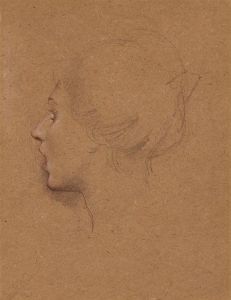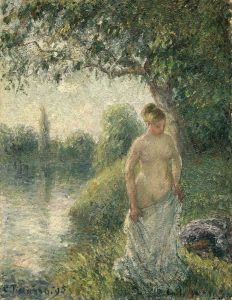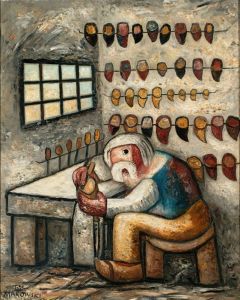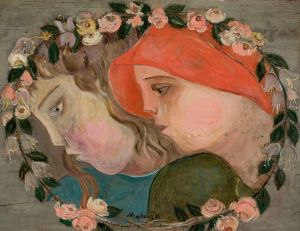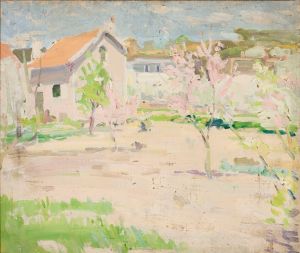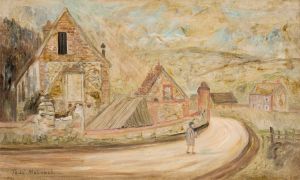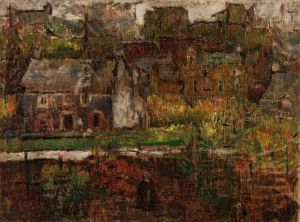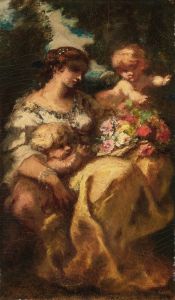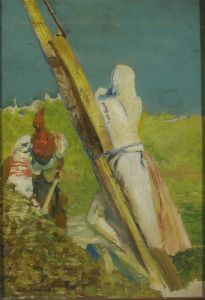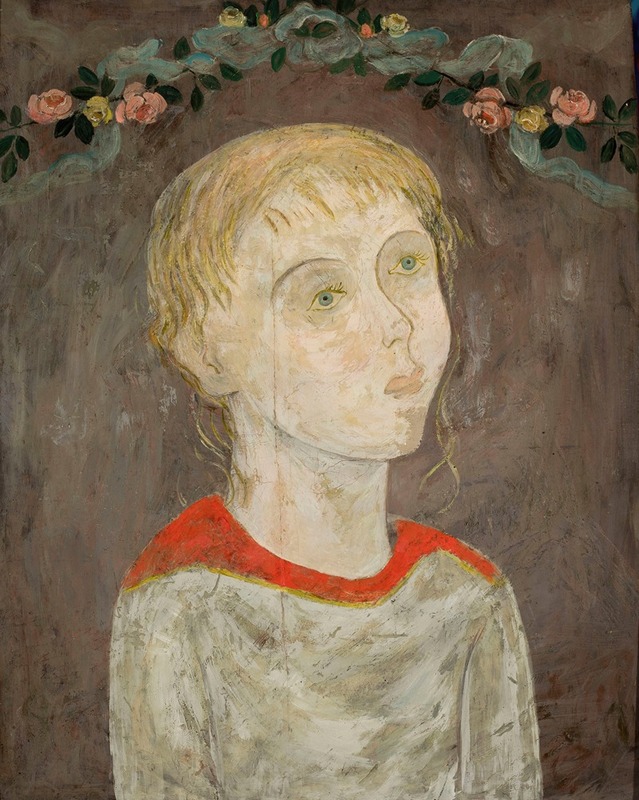
Dziewczyna z girlandą kwiatów
A hand-painted replica of Tadeusz Makowski’s masterpiece Dziewczyna z girlandą kwiatów, meticulously crafted by professional artists to capture the true essence of the original. Each piece is created with museum-quality canvas and rare mineral pigments, carefully painted by experienced artists with delicate brushstrokes and rich, layered colors to perfectly recreate the texture of the original artwork. Unlike machine-printed reproductions, this hand-painted version brings the painting to life, infused with the artist’s emotions and skill in every stroke. Whether for personal collection or home decoration, it instantly elevates the artistic atmosphere of any space.
Tadeusz Makowski was a Polish painter known for his unique style that combined elements of folk art, symbolism, and modernism. Born on January 29, 1882, in Oświęcim, Poland, Makowski initially studied classical philology at the Jagiellonian University in Kraków before pursuing art at the Academy of Fine Arts in Kraków. He studied under prominent artists like Józef Mehoffer and Jan Stanisławski, which helped shape his early artistic development.
Makowski moved to Paris in 1908, where he became part of the vibrant artistic community. Influenced by the works of Paul Cézanne and the burgeoning Cubist movement, Makowski began to develop his own distinctive style. Over time, he moved away from Cubism, incorporating more elements of Polish folk art and symbolism, which became a hallmark of his later works.
"Dziewczyna z girlandą kwiatów" (translated as "Girl with a Garland of Flowers") is one of Makowski's notable works, reflecting his mature style. This painting, like many of his others, features a child as the central subject, a recurring theme in Makowski's oeuvre. He often depicted children in a stylized manner, emphasizing innocence and simplicity, which resonated with his interest in folk art.
The painting portrays a young girl adorned with a garland of flowers, a motif that can be associated with purity and nature. Makowski's use of color and form in this work is characteristic of his later period, where he employed a more subdued palette and softer lines compared to his earlier, more Cubist-influenced works. The background and setting are typically minimalistic, drawing the viewer's attention to the subject's expression and the symbolic elements of the garland.
Makowski's work is often noted for its emotional depth and the way it captures the essence of childhood. His paintings, including "Dziewczyna z girlandą kwiatów," are imbued with a sense of nostalgia and a longing for simplicity, reflecting his personal experiences and the broader socio-cultural context of early 20th-century Europe.
Throughout his career, Makowski exhibited his works in various prestigious venues, gaining recognition both in France and Poland. Despite spending much of his life in France, he maintained strong ties to his Polish roots, which is evident in the themes and motifs present in his art.
Makowski passed away on November 1, 1932, in Paris, leaving behind a legacy that continues to influence Polish art. His works are housed in several major museums, including the National Museum in Warsaw and the Musée National d'Art Moderne in Paris, ensuring that his contribution to the art world is remembered and appreciated.
"Dziewczyna z girlandą kwiatów" remains a testament to Makowski's ability to blend different artistic influences into a cohesive and emotionally resonant style. His focus on children and the incorporation of folk elements make his work distinctive and enduring, offering insight into the artist's inner world and the cultural milieu of his time.





